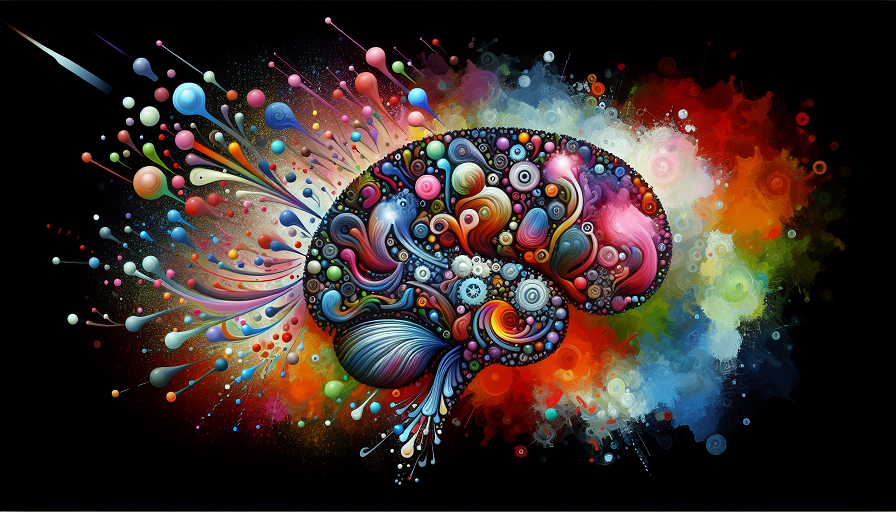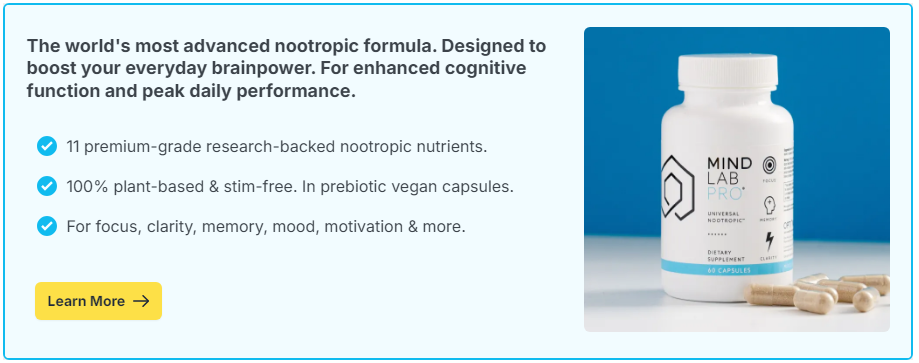
How many times have you marveled at a friend’s ability to come up with unique solutions or admired a peer’s knack for finding the most efficient answer to a problem? These skills aren’t just natural talents; they are rooted in two fundamental types of thinking: divergent and convergent thinking. While both are essential for problem-solving, creativity, and innovation, understanding the differences between them can revolutionize how we approach daily challenges. So, which one truly leads to better ideas? Here we look into the qualities of each and explore how they complement each other.
Contents
- What is Divergent Thinking?
- Understanding Convergent Thinking
- The Balance Between Divergent and Convergent Thinking
- Enhancing Thinking Skills with Nootropics
- Real-Life Applications of Divergent and Convergent Thinking
- Exploring Strategies to Enhance Both Thinking Styles
- Choosing Between Divergent and Convergent Thinking
What is Divergent Thinking?
Divergent thinking is all about generating multiple ideas or solutions to a single problem. Picture a tree with branches extending in various directions; that’s how divergent thinking works. It encourages exploring numerous possibilities without worrying about the limitations. This is the kind of thinking you employ when brainstorming or trying to come up with an original idea. It demands creativity, open-mindedness, and the ability to look at a situation from different angles.
Imagine you’re planning a birthday party. A divergent thinker might come up with a multitude of themes, locations, and activities, from a beach party to a space-themed gathering. This expansive thinking allows for flexibility and creativity, often resulting in fresh and innovative approaches to any problem or task at hand. Divergent thinking embraces the unusual and the unexpected, viewing obstacles as stepping stones rather than roadblocks.
Understanding Convergent Thinking
On the flip side, convergent thinking is like a funnel; it’s the process of narrowing down multiple ideas to find the single best solution. This type of thinking is often analytical and logical, focusing on accuracy and efficiency. It’s what you rely on when deciding which birthday theme fits the budget and time constraints or identifying which solution will most effectively fix a malfunctioning machine.
Convergent thinking is essential in scenarios where you need a clear, correct answer. It involves critical thinking, evaluating options, and making decisions based on facts and logic. While it might seem less creative at first glance, convergent thinking is vital for achieving practical, usable solutions from the rich tapestry of options that divergent thinking provides.
The Balance Between Divergent and Convergent Thinking
The most successful problem-solving often involves a harmonious blend of both divergent and convergent thinking. Initially, you might engage in a free-thinking, divergent session, generating a plethora of potential solutions or ideas. Once you have a selection, convergent thinking helps prune ideas and select the most effective route.
Consider the process of writing a book. An author first dives into the creative process, crafting various plot lines and character developments in a divergent phase. As the work progresses, they employ convergent thinking to tighten the storyline, enhance character development, and resolve inconsistencies. This back-and-forth movement between divergent and convergent thinking facilitates both creativity and practicality.
Enhancing Thinking Skills with Nootropics
Both divergent and convergent thinking processes can benefit significantly from enhanced cognitive function. This is where nootropics, or brain supplements, come into play. Nootropics are substances known to improve brain performance in areas such as memory, focus, and creativity. Common ingredients found in brain supplements, like ginkgo biloba or omega-3 fatty acids, support overall brain health, which in turn can foster a better environment for both types of thinking.
If you’re aiming to boost your ability to think creatively or solve problems effectively, incorporating certain nootropics into your routine might be beneficial. For instance, caffeine or L-theanine may enhance focus and concentration, while lion’s mane mushroom or Rhodiola rosea might support creative thinking and cognitive flexibility. While nootropics aren’t a magical solution, they can certainly be valuable tools when used responsibly and in conjunction with a healthy lifestyle.
Real-Life Applications of Divergent and Convergent Thinking
Both divergent and convergent thinking have practical applications in daily life, from school projects to career challenges. In education, teachers often use divergent thinking exercises to help students explore various solutions to a problem, fostering creativity and independent thought. Later, convergent thinking activities help students to refine their ideas and come to a concluded answer, promoting critical thinking skills.
In the workplace, teams might begin a project with a brainstorming phase that channels divergent thinking, aiming to generate as many ideas as possible. Once a range of suggestions is on the table, individuals use convergent thinking to evaluate those ideas based on feasibility, cost, and impact, leading to a final decision that is both innovative and practical.
Exploring Strategies to Enhance Both Thinking Styles
To further refine your divergent and convergent thinking abilities, there are several strategies and exercises you can incorporate into your routine. For divergent thinking, activities like mind mapping or engaging in random word stimulation can jumpstart creativity. These exercises help break the traditional pattern of thinking, encouraging you to see issues from various perspectives and find unconventional solutions.
Engaging in regular creative pursuits such as drawing, writing, or playing a musical instrument can also stimulate divergent thinking by training your brain to operate in innovative and unfettered ways. Collaboration is another effective approach, as bouncing ideas off others can introduce new angles and possibilities that you might not have considered alone.
Choosing Between Divergent and Convergent Thinking
Ultimately, whether divergent or convergent thinking leads to better ideas depends on the situation and the balance between invention and practical application. While divergent thinking sets the stage with creativity, convergent thinking ensures that ideas are viable and actionable. Each has its own strengths and can lead to impactful solutions when used at the right time.
Embracing both types of thinking while supporting brain health through nootropics or other lifestyle choices can enrich your cognitive toolkit, allowing you to tackle problems with confidence and flair. The next time you face a challenge, try to appreciate the power of these thinking styles by employing them together for a well-rounded approach to innovation and problem-solving.

